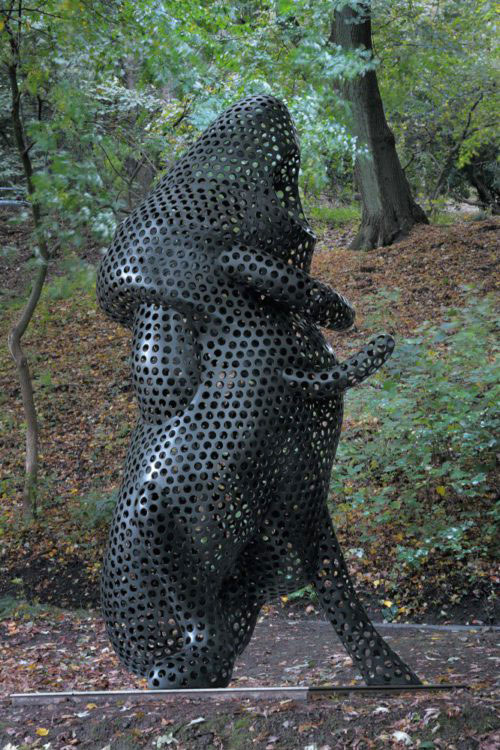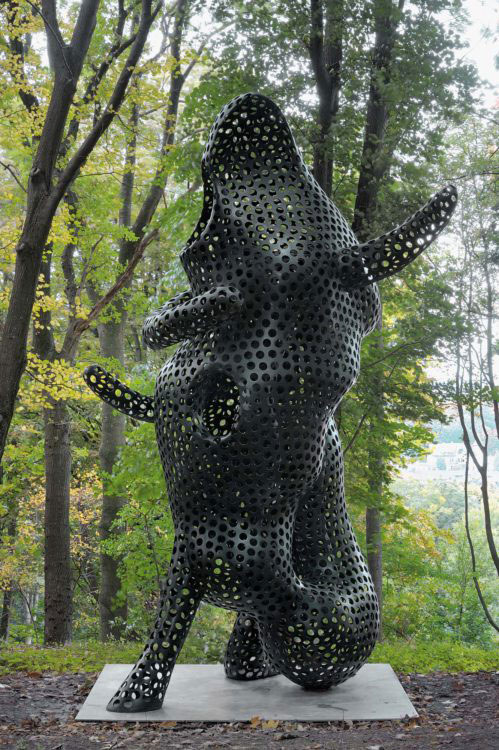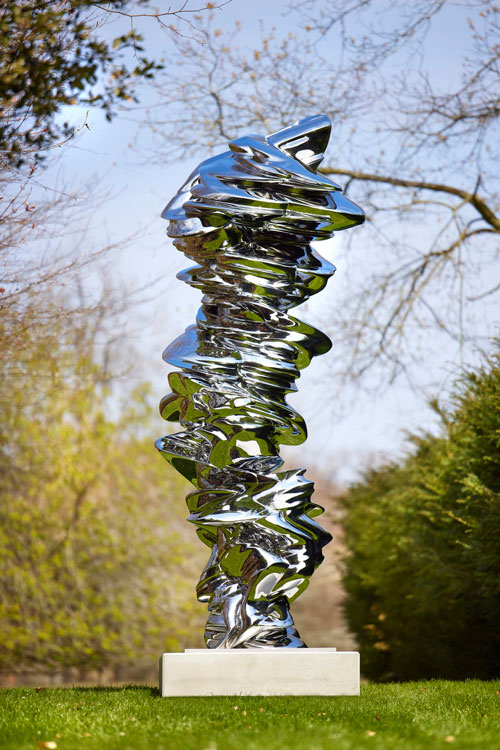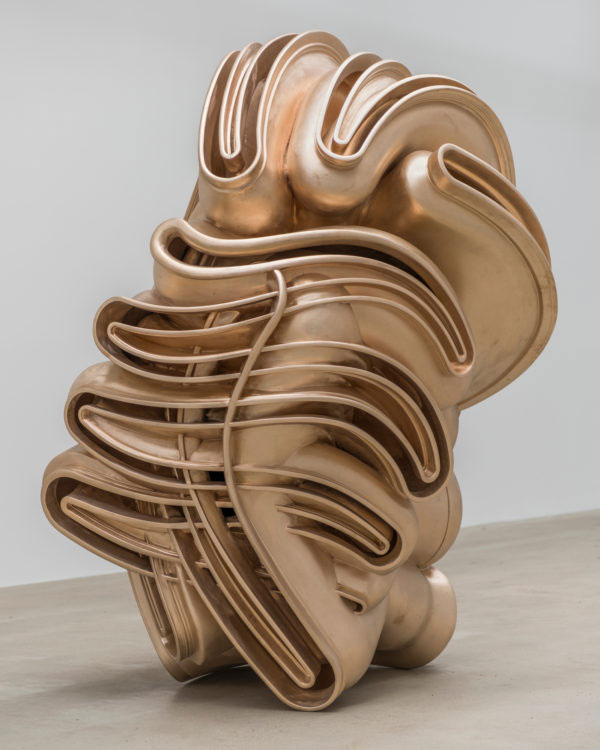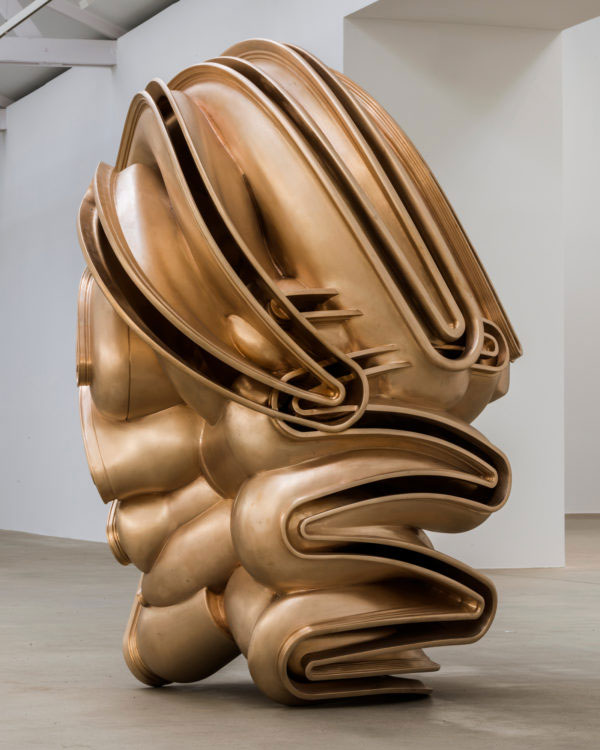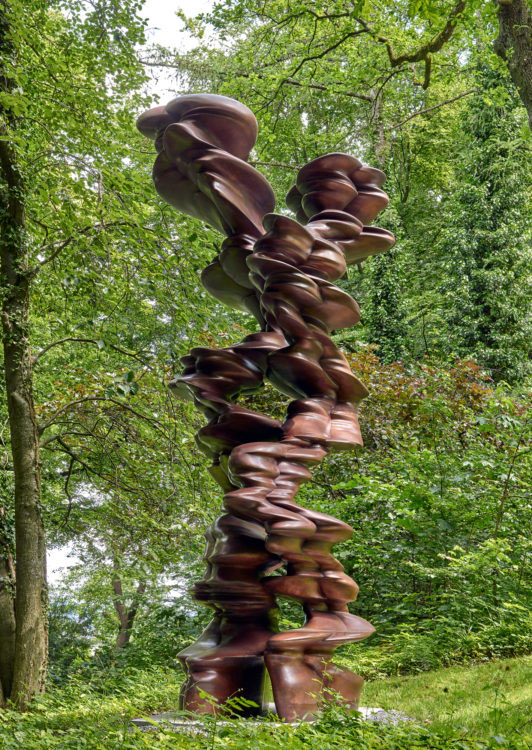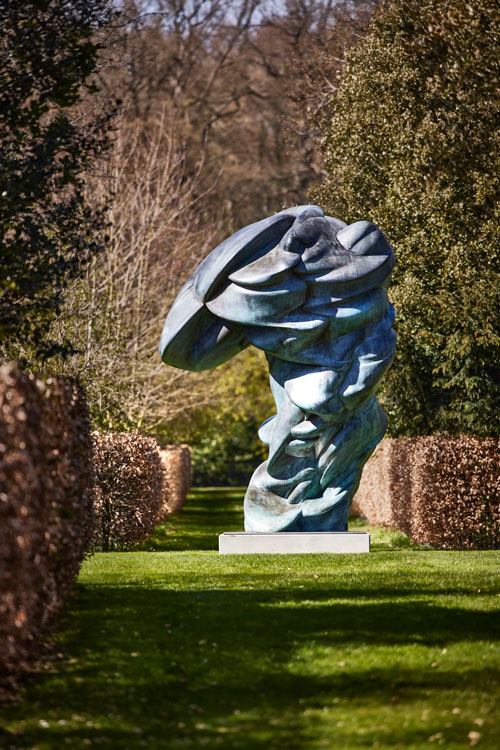ART-PRESENTATION: Tony Cragg at Houghton Hall
 Constantly pushing to find new relations between people and the material world, there is no limit to the materials Tony Cragg might use, as there are no limits to the ideas or forms he might conceive. His early, stacked works present a taxonomical understanding of the world, and he has said that he sees manmade objects as “fossilized keys to a past time which is our present”. So the floor and wall arrangements of objects that he started making in the 1980s blur the line between manmade and natural landscapes.
Constantly pushing to find new relations between people and the material world, there is no limit to the materials Tony Cragg might use, as there are no limits to the ideas or forms he might conceive. His early, stacked works present a taxonomical understanding of the world, and he has said that he sees manmade objects as “fossilized keys to a past time which is our present”. So the floor and wall arrangements of objects that he started making in the 1980s blur the line between manmade and natural landscapes.
By Dimitris Lempesi
Photo: Houghton Hall Archive
Major works by Tony Cragg are on show in the grounds and historic interiors of Houghton Hall in Norfolk. The exhibition “Tony Cragg at Houghton Hall” includes large-scale bronze and steel sculptures sited in the gardens and grounds, and smaller pieces shown in the State rooms and gallery spaces of the house. Several new works have been made specifically for the exhibition. A self-described “radical materialist”, Tony Cragg constantly explores new materials and their expressive possibilities, as well as complex relationships between the natural and material world. As he said “we are the result of our material surroundings and the appearance or form we have taken is due to the particular circumstances of our existence […] Material is what we are made of and where we originated”. The artist’s recent works suggest the movement and transience of elements caught in the process of transformation, as in stainless steel forms that convey the fluidity of molten metal. A palpable sense of movement is conveyed through a number of the monumental works, and the implied motion of these biomorphic sculptures is reminiscent of the Italian Futurists, while the verticality of his “Mean Average” (2018) recalls Constantin Brâncuși, who similarly arrived at a reduction of natural forms through his unique approach to abstraction. Influenced by Land Art and Arte Povera, Cragg’s early works were accumulations of found objects and waste materials, including discarded furniture, machine parts and glass or plastic bottles. The materials were ordered according to precise systems and he later applied the same stacking principles to thin layers of wood to form undulating organic structures. These recall natural geological forms, such as the sedimentation of mineral particles to create strata or the weathering of rock by the forces of wind and water. Nature with all its structures, from micro to macro, has also been the dominant theme of Tony Cragg’s work over the past ten years. His intention has never been to copy from nature, but rather to discover the ideas and emotions that different materials and forms can evoke. The interplay between positive and negative space is a structuring principle in his sculptures, whether in the perforations that lighten the mass of “Ferryman” (2001) or the interpenetrating forms of “Runner” (2015) that map out the spaces between them.
Info: Curator: Jon Wood, Houghton Hall, King’s Lynn, Norfolk, England, Duration: 19/5-26/9/2021, Days & Hours: Selected Days, Tickets: £18 per adult, Under 18yrs Free of Charge and Students £10 (All tickets must be pre-booked online), www.houghtonhall.com
